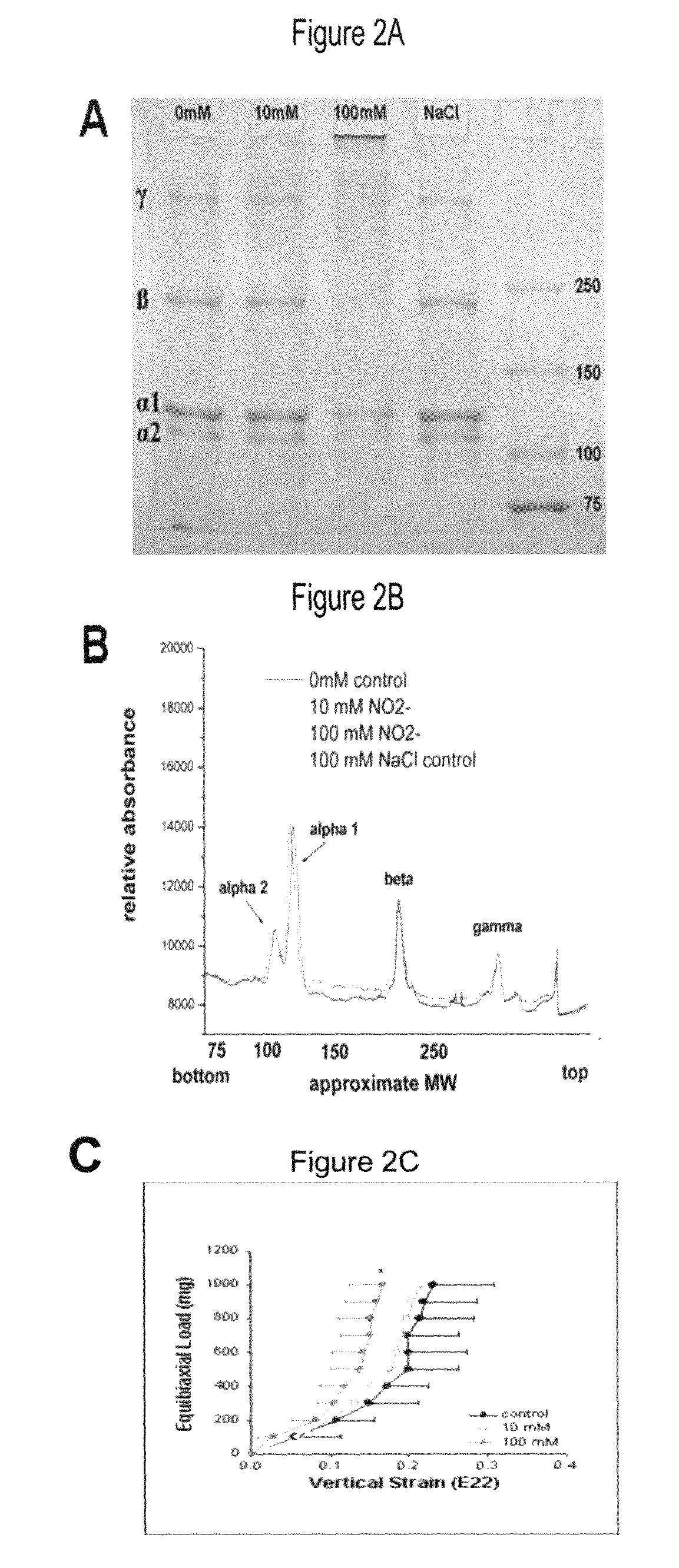Method of stabilizing human eye tissue by reaction with nitrite and related agents such as nitro compounds
a technology of nitro compounds and human eye tissue, which is applied in the direction of biochemical apparatus and processes, drug compositions, biocide, etc., can solve the problems of corneal transplantation, contact lenses cannot be worn, pathologic changes that take place are accompanied by a loss of biomechanical strength, etc., and none of these options obviate the need for eventual corneal transplantation
- Summary
- Abstract
- Description
- Claims
- Application Information
AI Technical Summary
Benefits of technology
Problems solved by technology
Method used
Image
Examples
examples
Biaxial Mechanical Tests
[0084]Biaxial mechanical properties of the collagen gels were examined by performing equibiaxial load controlled experiments after 72 hours of culture for pretreated and 10 days of culture for posttreated collagen gels. To perform the planar biaxial mechanical test, the loading frame was first removed and the gels were floated to the top of their Petri dish using standard media (DMEM with 10% FBS and antibiotics) at 37° C. Gels were loaded by applying equal weights on all sides of the gel simultaneously (equibiaxial loading). First, gels were preconditioned by cyclically applying and removing 1 gram weights on all sides. Preconditioning refers to a standard phenomenon in soft biologic tissues where the response to an applied load differs with the first few applications but eventually stabilizes as the load is repeatedly applied and removed. In these gels we have found that five cycles are sufficient to obtain a stable response, so five cycles of preconditioni...
PUM
| Property | Measurement | Unit |
|---|---|---|
| pH | aaaaa | aaaaa |
| pH | aaaaa | aaaaa |
| pH | aaaaa | aaaaa |
Abstract
Description
Claims
Application Information
 Login to View More
Login to View More - R&D
- Intellectual Property
- Life Sciences
- Materials
- Tech Scout
- Unparalleled Data Quality
- Higher Quality Content
- 60% Fewer Hallucinations
Browse by: Latest US Patents, China's latest patents, Technical Efficacy Thesaurus, Application Domain, Technology Topic, Popular Technical Reports.
© 2025 PatSnap. All rights reserved.Legal|Privacy policy|Modern Slavery Act Transparency Statement|Sitemap|About US| Contact US: help@patsnap.com



